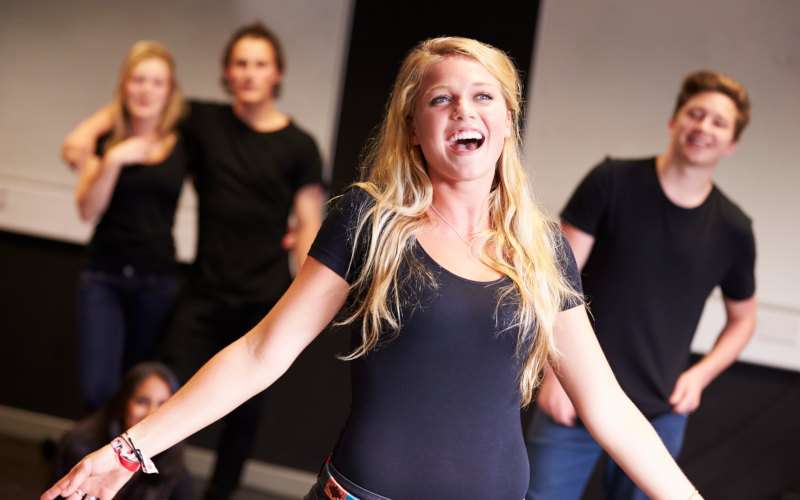Have you ever wondered what the most common female voice type is? Understanding the different voice types can be useful for singers or anyone interested in vocal music. Female vocal ranges typically fall into three main categories: soprano, mezzo-soprano, and alto. Each of these voice types has distinct characteristics, such as vocal range and timbre.
The most common female voice type is the mezzo-soprano. Mezzo-sopranos sit between the higher soprano voice and the lower contralto voice, making them versatile and capable of singing a wide range of musical styles. If you’re a female singer, there’s a good chance that you might belong to this voice type, which offers plenty of tuneful opportunities for you to explore and showcase your unique vocal talents.
So, there you have it! The most common female voice type is the mezzo-soprano. Remember that each person’s voice is unique, and while these classifications can be helpful starting points, it’s important to embrace your own vocal qualities and continuously work on honing your craft.
The Female Voice Explained
As a soprano, your vocal range typically falls somewhere from the A note beneath the middle C to the F/G note two octaves above. This impressive range spans about two to three octaves.
Now, let’s dive a little deeper into your voice characteristics. Your voice type depends on various factors such as vocal range, vocal weight, tessitura, vocal timbre, and vocal transition points. For instance, your vocal timbre refers to your unique “oomph” factor, making your singing voice distinctly yours.
Here is a quick overview of the different female voice types:
- Soprano: The highest female voice, known for light and agile vocals.
- Mezzo-soprano: A warm, versatile voice type, typically a step lower than soprano.
- Alto/Contralto: The lowest female voice, often characterized by a rich, deep tone.
The amazing thing about the female voice is its capacity for expression and how it changes as you grow. During puberty, usually between the ages of 10 to 14, a girl’s voice drops by about three tones. While not as drastic as the male voice, this change remains noticeable as the neck grows and the voice box shifts to a lower position.
Remember, discovering your vocal range and working on your technique is essential to nurturing your singing potential. Embrace the beauty and power of your unique female voice, and let it take you to new heights.
Understanding Voice Types
Soprano
The highest of the female voice types, sopranos usually have a vocal range that begins around middle C and extends to high C, or C6. When you think of a soprano, you might envision a powerful, high-pitched sound, often heard in opera or classical music. Some famous sopranos include Maria Callas and Renée Fleming.
Soprano voices can be further divided into subcategories, such as:
- Coloratura Soprano: Known for their agility and ability to handle rapid, intricate passages, these singers excel in elaborate ornamentation and vocal acrobatics.
- Lyric Soprano: With a warm, smooth, and melodic tone quality, lyric sopranos shine in romantic and expressive roles.
- Dramatic Soprano: Possessing a powerful voice with a rich, emotional quality, dramatic sopranos bring intensity and depth to operatic and dramatic roles.
Mezzo-Soprano
Mezzo-sopranos fall between the lower-pitched contralto and the higher-pitched soprano voice. Mezzo-sopranos are the most common female voice type, often heard in popular music and musical theatre. Famous mezzo-sopranos include Adele and Beyoncé.
Within the mezzo-soprano category, these subtypes exist:
- Coloratura
- Lyric
- Dramatic
Contralto
As the lowest female voice type, contraltos have a rich, deep sound that is quite distinctive. Their vocal range typically spans from F3 to F5, with a tessitura that sits comfortably in a lower register. Contralto singers are quite rare, but some famous examples include Annie Lennox and Toni Braxton.
Contralto subcategories include:
- Coloratura
- Lyric
By understanding these voice types, you can better appreciate the immense talent and diversity among female singers. Each voice type brings a unique tone and depth to their performances, and knowing their distinctions can enhance your musical experience.
Factors Determining Female Voice Type
The Charismatic Voice: Voide Type & How To Find Yours:
Physical Factors
Your vocal range and type are largely determined by your physical characteristics, such as the size and shape of your vocal cords, as well as the resonance and structure of your vocal tract. Mezzo-soprano possesses a slightly lower range than the soprano and able to sing both the soprano and alto parts in a choir. This versatility makes it more common and well-suited for various genres and styles in music.
Besides vocal cords and your vocal tract, your age also plays a significant role in determining your female voice type. As you grow older, your voice might change, becoming either deeper or more narrow, which affects the way you sing and project your voice. Hormonal changes may also modify voice quality and range over time.
Training and Technique
Training and technique can greatly influence your female voice type. With proper technique, you can improve and expand your vocal range, modify your vocal tone, and enhance your overall singing abilities. A skilled vocal coach can guide you in discovering your natural voice type while helping you develop your unique sound.
When determining your voice type, it is essential to understand your vocal Fach, which refers to the classification of your voice based on your natural range, timbre, and vocal qualities. Proper classification enables you to train more effectively, avoid strain on your vocal cords, and achieve a more suitable singing style for your voice.

